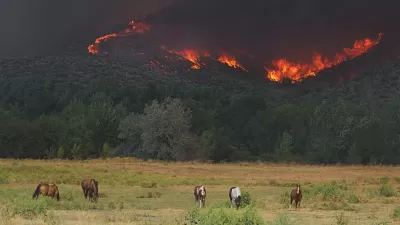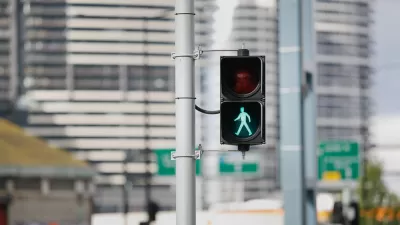The research director of the National League of Cities explains the defining characteristics of local economies—namely that of five distinct kinds of local economies, three serve to distinguish the nuances between mid-sized cities.

Chistiana McFarland shares news of a report published by the National League of Cities. The report, titled "Local Economic Conditions: The Untold Story of the Varied Middle," introduces "five distinct types of local economies": a highly rural cluster, a large central city cluster, and three different kinds of economies that represent a middle ground between those two ends of spectrum.
The report defines the three mid-sized varieties of local economies as "Room to Grow," "Mid-sized Business Boomers," and "Cities on Par."
According to McFarland's explanation, these three varieties of mid-sized cities are further defined as follows:
- Room to Grow economies are defined by favorable commercial property values, affordable housing stock and population growth.
- Mid-Sized Business Boomer city cluster comprises hotbeds of business expansions located mostly in core cities of mid-sized metro areas.
- Cities on Par cluster tend to have populations between 50,000 and 100,000 and are defined largely by their high residential property values.
FULL STORY: The Untold Story of Mid-Sized Economies

Planetizen Federal Action Tracker
A weekly monitor of how Trump’s orders and actions are impacting planners and planning in America.

Chicago’s Ghost Rails
Just beneath the surface of the modern city lie the remnants of its expansive early 20th-century streetcar system.

San Antonio and Austin are Fusing Into one Massive Megaregion
The region spanning the two central Texas cities is growing fast, posing challenges for local infrastructure and water supplies.

Since Zion's Shuttles Went Electric “The Smog is Gone”
Visitors to Zion National Park can enjoy the canyon via the nation’s first fully electric park shuttle system.

Trump Distributing DOT Safety Funds at 1/10 Rate of Biden
Funds for Safe Streets and other transportation safety and equity programs are being held up by administrative reviews and conflicts with the Trump administration’s priorities.

German Cities Subsidize Taxis for Women Amid Wave of Violence
Free or low-cost taxi rides can help women navigate cities more safely, but critics say the programs don't address the root causes of violence against women.
Urban Design for Planners 1: Software Tools
This six-course series explores essential urban design concepts using open source software and equips planners with the tools they need to participate fully in the urban design process.
Planning for Universal Design
Learn the tools for implementing Universal Design in planning regulations.
planning NEXT
Appalachian Highlands Housing Partners
Mpact (founded as Rail~Volution)
City of Camden Redevelopment Agency
City of Astoria
City of Portland
City of Laramie





























